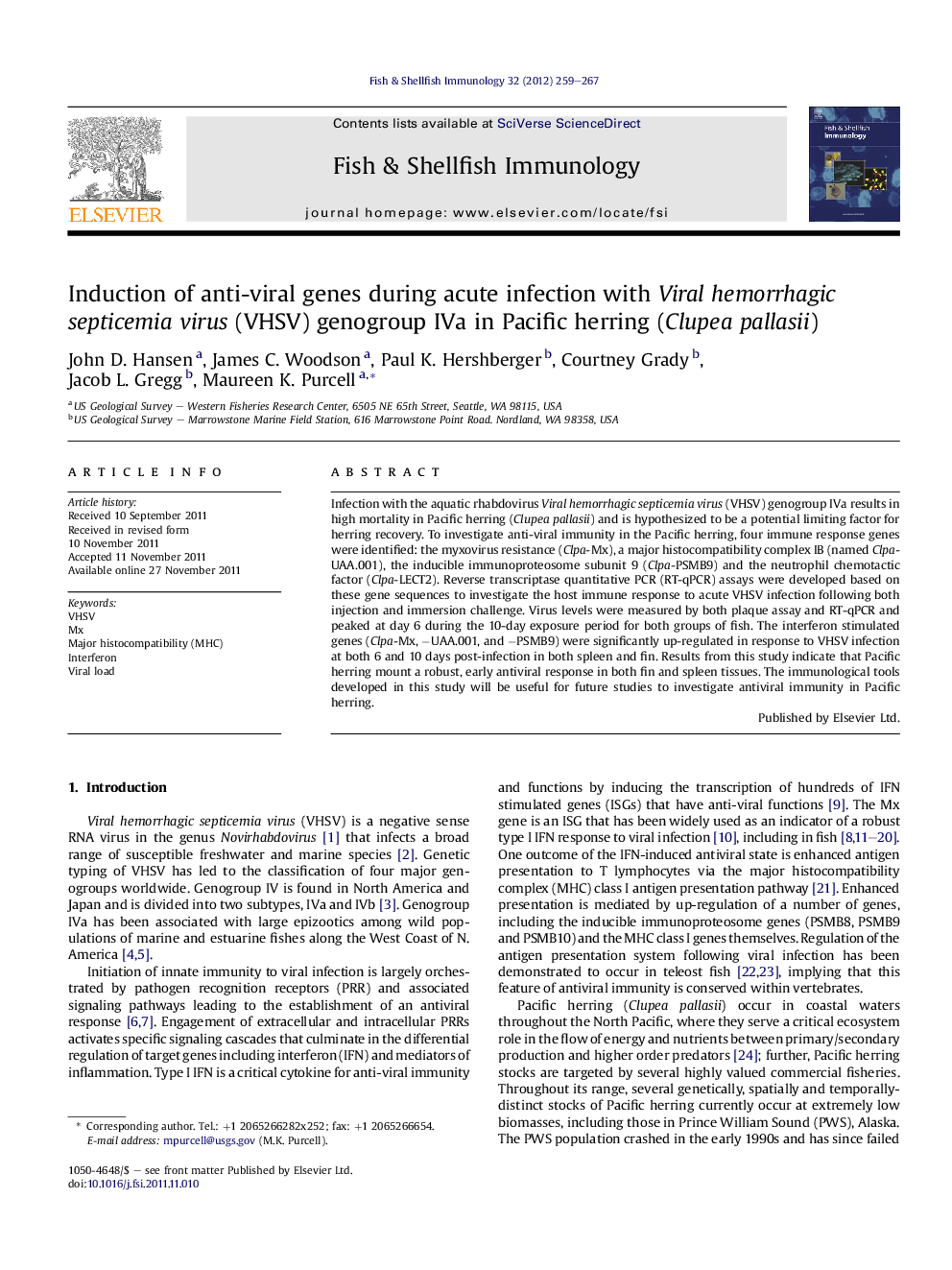| Article ID | Journal | Published Year | Pages | File Type |
|---|---|---|---|---|
| 2432343 | Fish & Shellfish Immunology | 2012 | 9 Pages |
Infection with the aquatic rhabdovirus Viral hemorrhagic septicemia virus (VHSV) genogroup IVa results in high mortality in Pacific herring (Clupea pallasii) and is hypothesized to be a potential limiting factor for herring recovery. To investigate anti-viral immunity in the Pacific herring, four immune response genes were identified: the myxovirus resistance (Clpa-Mx), a major histocompatibility complex IB (named Clpa-UAA.001), the inducible immunoproteosome subunit 9 (Clpa-PSMB9) and the neutrophil chemotactic factor (Clpa-LECT2). Reverse transcriptase quantitative PCR (RT-qPCR) assays were developed based on these gene sequences to investigate the host immune response to acute VHSV infection following both injection and immersion challenge. Virus levels were measured by both plaque assay and RT-qPCR and peaked at day 6 during the 10-day exposure period for both groups of fish. The interferon stimulated genes (Clpa-Mx, −UAA.001, and −PSMB9) were significantly up-regulated in response to VHSV infection at both 6 and 10 days post-infection in both spleen and fin. Results from this study indicate that Pacific herring mount a robust, early antiviral response in both fin and spleen tissues. The immunological tools developed in this study will be useful for future studies to investigate antiviral immunity in Pacific herring.
► Immune genes were identified in Pacific herring infected with VHS virus. ► Interferon stimulated genes were correlated with VHSV load in tissues. ► Pacific herring mount a typical robust anti-viral response following VHSV infection.
